Submitted by witiya pittungnapoo
Bangkok on the move for being flood resilience
Thailand Architecture News - Mar 26, 2019 - 01:10 8989 views

Bangkok on the move for being flood resilience.
Bangkok is a blueprint of Ayutthaya a former capital city of Thailand; as its traditional settlement was designed as a hydraulic city structure to live with water. Bangkok was also laid into the Chao Phraya River Basin where the city was crisscrossed by canals and flooding was a natural phenomenon; however, flooding has become problematic unpredictable and stayed longer than it used to be in the past due to rampant urbanisation and increase in climate change. Since Bangkok and its metropolitan region have been dramatically intruded by corridors of roads then Bangkok has lost its water-based unique city fabric and become one of the most serious sinking cities in the world.
A great effort in landscape architecture design to deal with flooding issue in Bangkok can be seen from the Centennial Anniversary Park of Chulalongkorn University: CU located in Pathumwan District which is the most important commercial area of the City. Thanks to the great vision of the CU which is the landowner for this great contribution to launch the design contest for transformed 11 acres of the CU campus (700 million USD estimated land price) to mitigate the CBD of Bangkok from flooding. The project is a gift on the occasion of the 100th anniversary of the establishment of Chulalongkorn University, which has created a new urban green environment for the city which has served as leisure space for the University communities; especially as the liveable flood-resilient environment for Bangkokians.
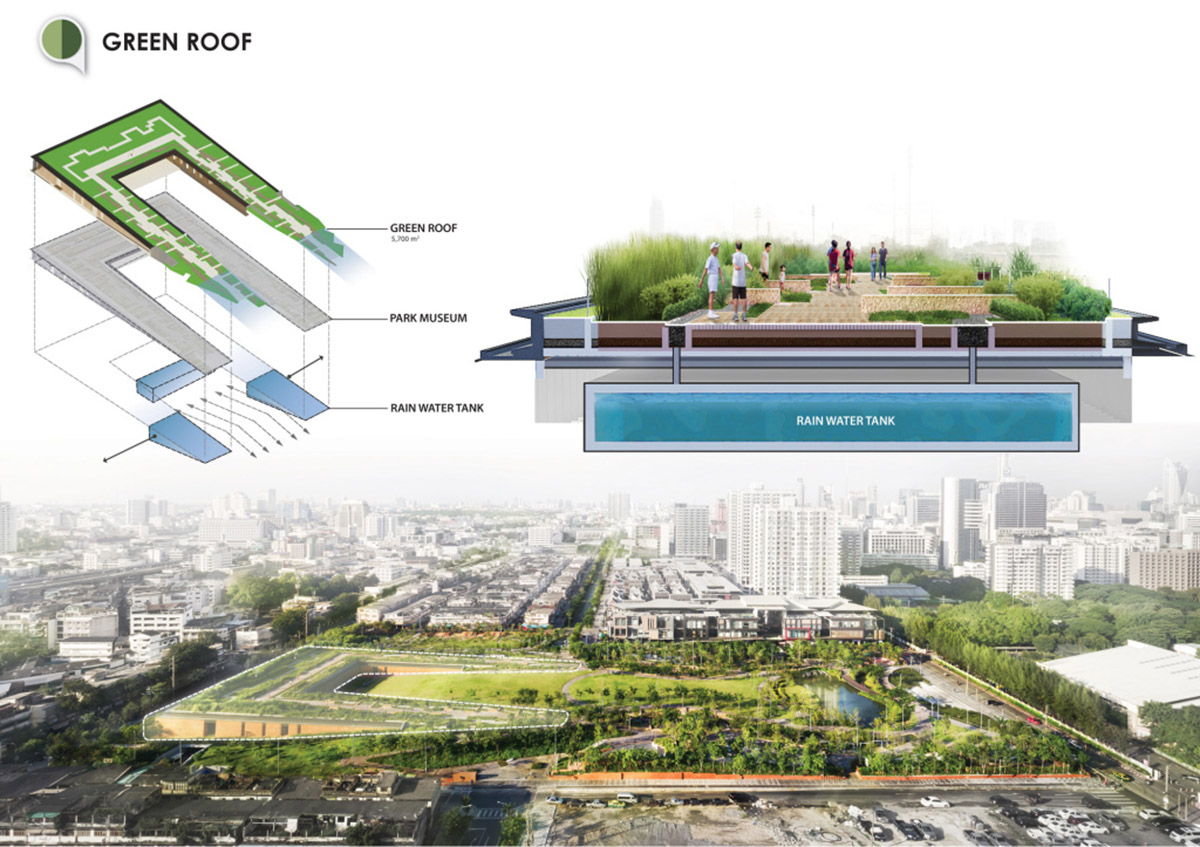
An aerial view of the Park and the storage tanks under the green roof and the museum. Image courtesy of the TED
Kotchakorn Voraakhom the Thai landscape architect who won this design contest. She designed this land to be as a stunning Centennial Anniversary Park which was functioned to maintain runoff water like a rain storage park for Bangkok during the rainy season as the city is one of a number of flood-prone cities in Thailand. Three water tanks were stored under the roof and the building can maintain 250,000 gallons of water while the green park can collect 105,000 gallons of rainwater. The project consists of a massive green and blue recreation, green roof, wetland, retention lawn, playgrounds, and a small museum building. Rainwater will be collected through the green roof and greenery landscape around the building which will act as retention ponds; whereas the slopy lawn will be transformed to be retention lawn during the rainy season (Patrick D'Arcy, 2018).
The museum building consists of a small exhibition as a learning centre based on the Royal Projects on Water and Flood Management initiated by King Rama IX. Interestingly, it is important to note that contributions from the Royal initiatives of King Bhumibol guiding water resource management and his Majesty’s Theory on land and water management have been widely applied to manage water across the country. Monkey cheek was firstly initiated by the King in 1995 and this concept functions as retaining reservoirs which were built in different scales (national, regional, and local) depending on locations affected by runoff water through the natural drainage system and river basin. This Majesty's notion has inspired Voraakhom's design which was integrated into the function of this park.
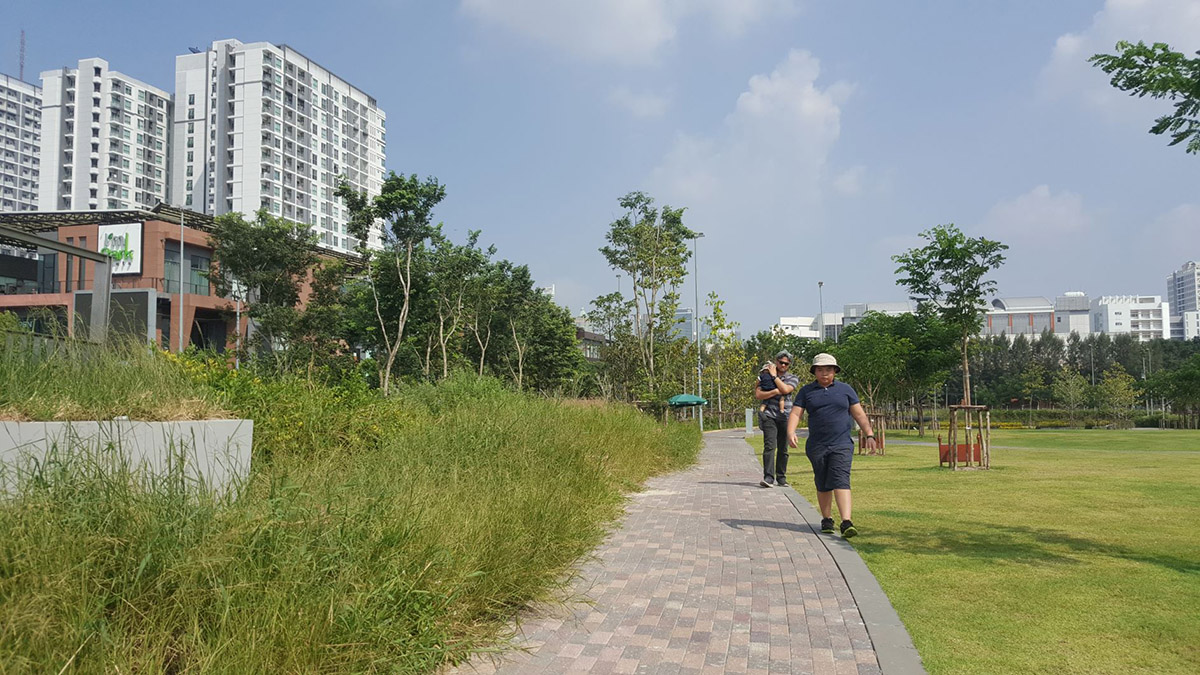
The landscape at the main entrance of the park. Photo © Witiya Pittungnapoo (October 2017)
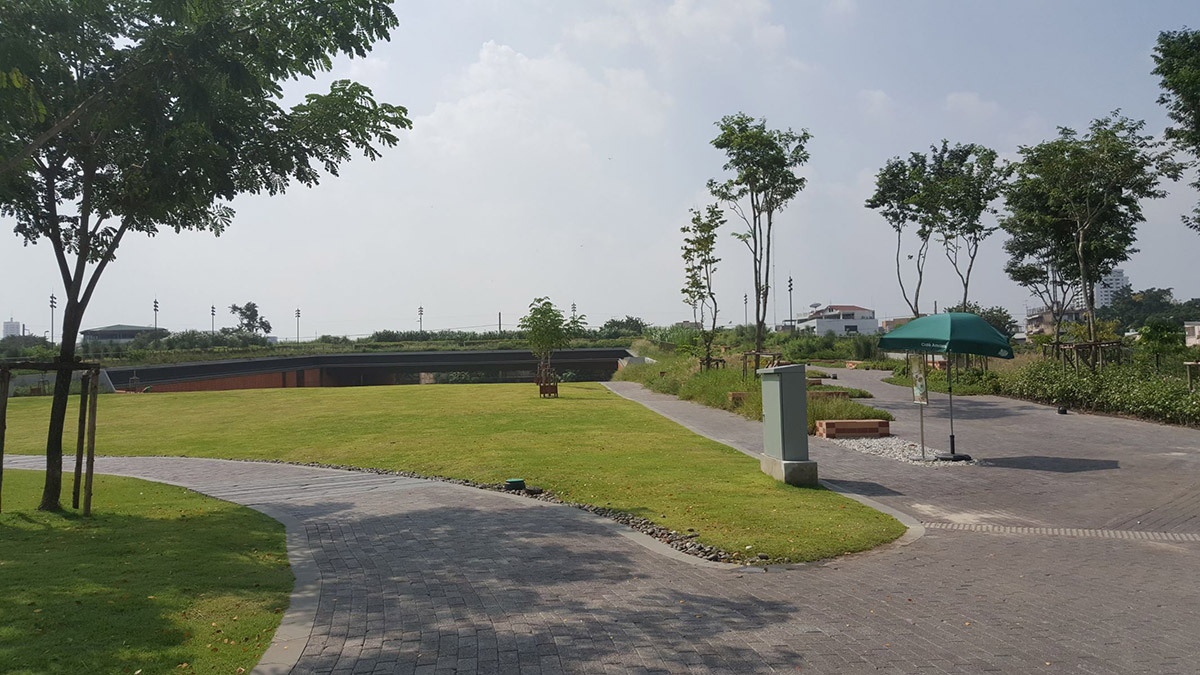
The green landscape and walkways at the entrance of the park building. Photo © Witiya Pittungnapoo (October 2017)

The 3-degree slopy lawn will pull rain and runoff water from the top of the park and the green roof to the lowest floor underneath the park building which will act as the retention pond. Photo © Witiya Pittungnapoo (October 2017)

The permeable surface of the gravel court near will let water flow into the ground connected to the water tank underneath the building. Photo © Witiya Pittungnapoo (October 2017)
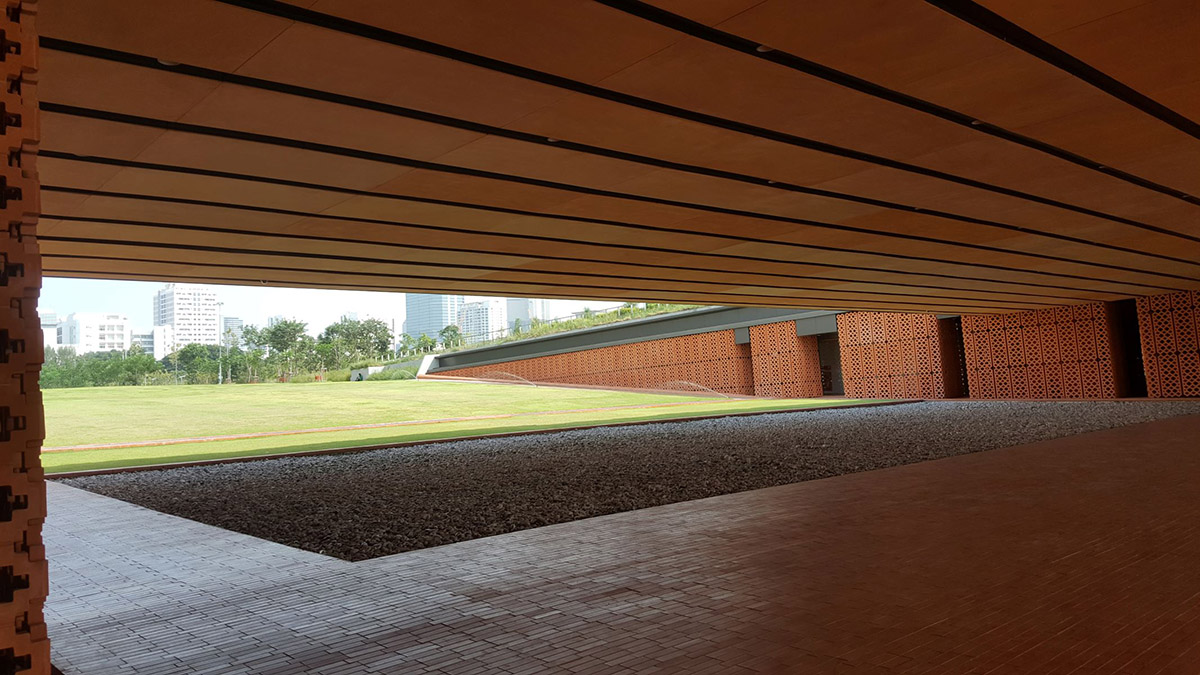
The gravel park near the entrance hall of the building. Photo © Witiya Pittungnapoo (October 2017)
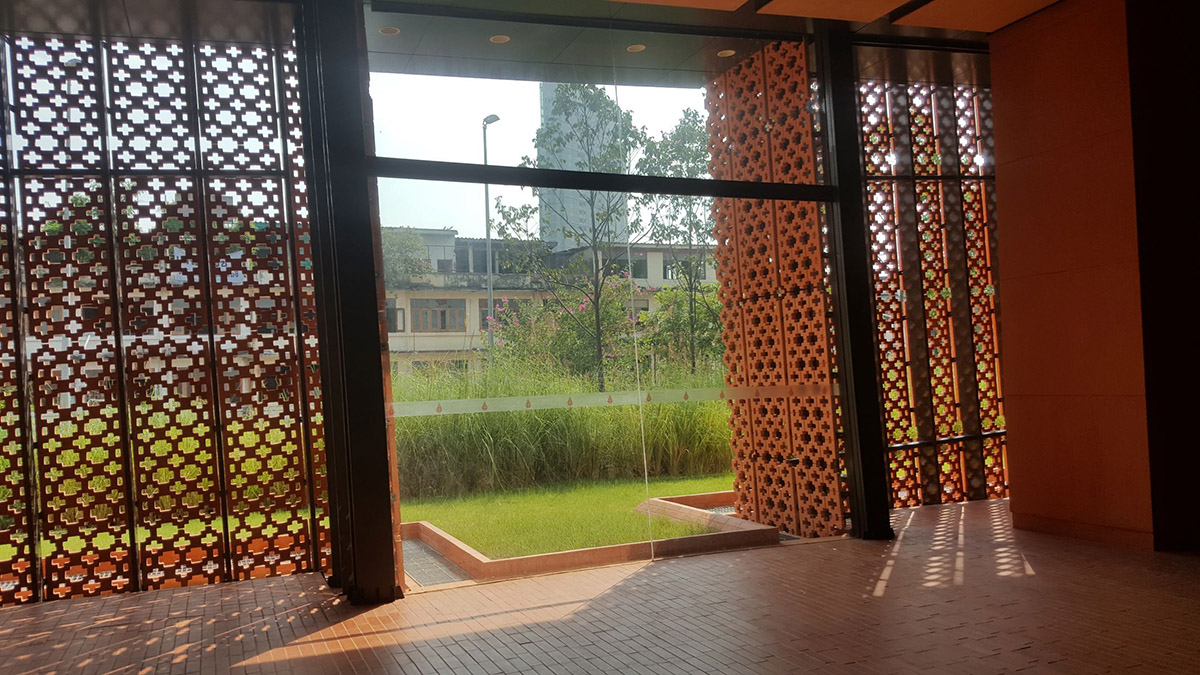
The building of the museum was surrounded by greenery landscape which will act as wetland and retention ponds during the wet season. Photo © Witiya Pittungnapoo (2017)

An exhibition inside the museum building is an interactive learning platform at the main hall of the park. Photo © Witiya Pittungnapoo (October 2017)

The park is also accessible by cars where parking spaces were provided underneath the building. Photo © Witiya Pittungnapoo (October 2017)
The CU Centennial Park is the first pioneer landscape architecture and good practice for flooding resilient design in the country. The project was completed and opened for public in March 2017, and the park is opened for all to access daily from 05:00 to 22:00. This park has reminded Thais people how to live with water and nature based on ecological adapted wisdom to celebrate the 100th anniversary of Chulalongkorn University as the first university in the country where is the pride of wisdom meet the need of society. Bangkok as the blueprint of Ayutthaya which used to be named as the Venice of the East can be reshaped as the flood resilient city; the CU Centennial Park has been the good practice which can be applied to other cities affected by flooding in a similar context based on their own resilient future.
Top image: An aerial view of the CU Centennial Park. Image courtesy of TED.
